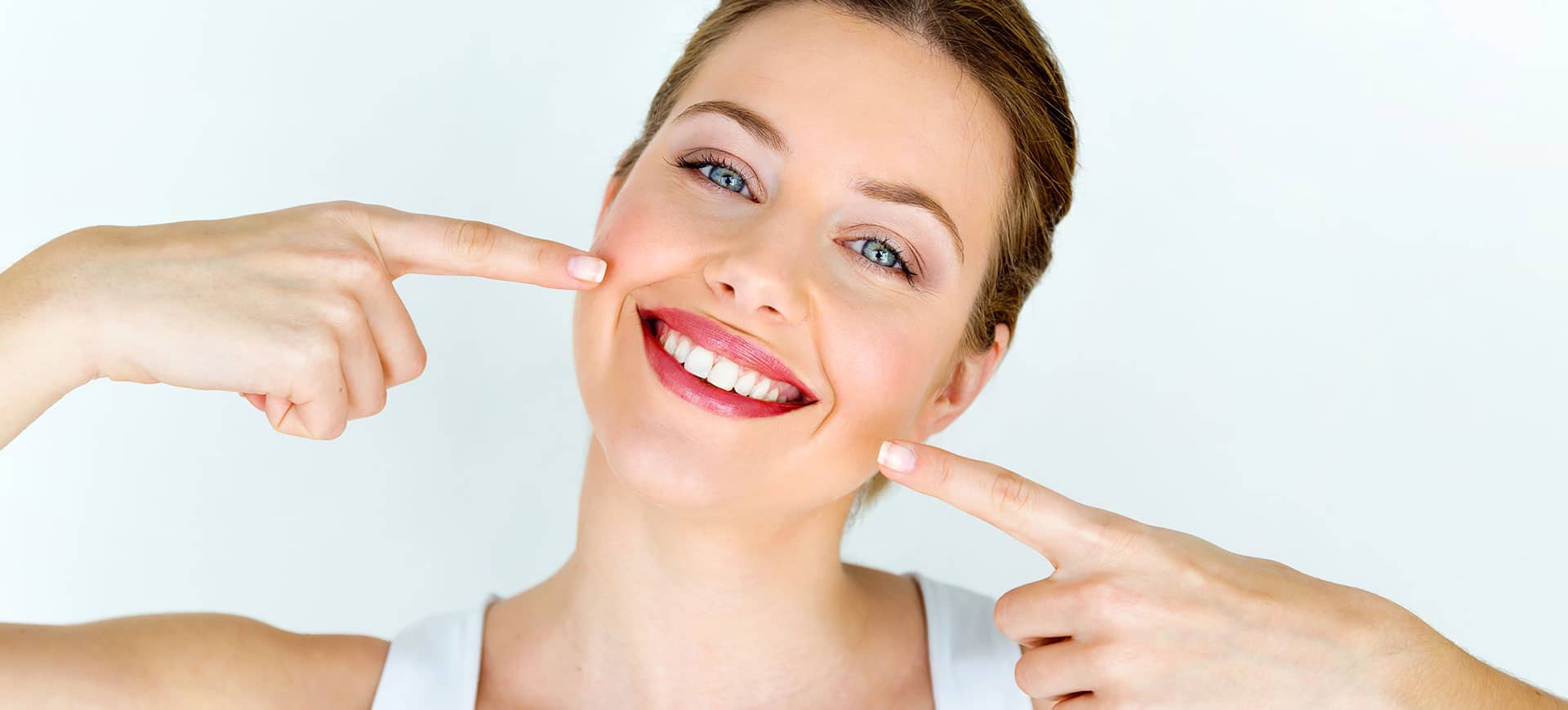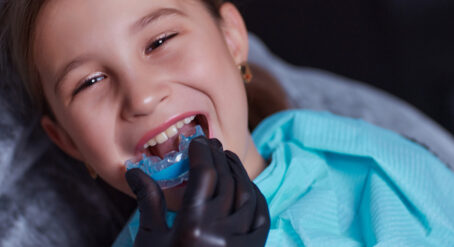We all know that orthodontic treatment can change how your teeth look. But did you know it can also affect the shape of your face? Though you might not notice the difference in your face straight away, there are plenty of subtle changes happening to your facial structure during your orthodontic treatment. From your jaw line to your gums, we’re going to explore the different ways orthodontic treatment can affect your facial appearance.
How does orthodontic treatment change your facial shape?
Depending on the type of treatment you’re receiving, your facial shape can change subtly. For those who have a large overbite, your misaligned jaw and pronounced front teeth can give you the appearance of an undefined lower jaw and weak chin. Orthodontic treatment can remedy both the protruding teeth and the jaw alignment, which in turn can reshape your face slightly as your teeth and jaw improve.
Meanwhile, if you have an underbite, chances are that your lower jaw looks more prominent than usual, and your cheeks may appear more sunken in. But by undergoing orthodontic treatment, you might notice that your jaw will be (gently) shifted back into an ideal position.
Can an overbite or buck teeth be corrected with braces?
In conjunction with orthodontic elastics and/or bite correcting springs, braces can fix most overbite problems, including buck teeth. But it’s important that you book a consultation with an orthodontist to work out what type of treatment is best for your circumstances. During your assessment, your orthodontist will take jaw x-rays to determine the nature and severity of your malocclusion and create a treatment plan to ensure that your overbite is corrected safely and effectively with maximum benefit to your facial appearance.
Do braces improve your jawline?
Orthodontic treatment might change or improve your jawline. But a noticeable change in your jaw often results from the use of expansion appliances, functional appliances, elastics or surgery, in addition to braces or aligners. Correcting a misaligned bite while also straightening your teeth will be the priority for your specialist orthodontist. Optimal orthodontic treatment outcomes should achieve a balance of cosmetic improvement to the teeth, smile, face and jawline, as well as a stable, comfortable and functional bite.
Can your smile change after braces?
From an aesthetic perspective, it’s likely you’ll notice a change in your smile after having braces. Braces align and correct your teeth or bite. So depending on the treatment you need, you might notice your smile appears straighter or less crowded or that your teeth are in different positions.
Will orthodontic treatment change the shape of your mouth?
Depending on the type of malocclusion that is being corrected, you might notice a change in how your mouth itself looks after the orthodontic treatment. This is because some conditions, like an open bite, can make it difficult to close the mouth completely. This can give the mouth a stretched appearance. By correcting the bite you’ll help change the shape of your mouth when it’s closed.
Does orthodontic treatment change your lips?
After getting braces or other forms of orthodontic treatment, you might notice that your lips look fuller than before. This is because the prominence or fullness of the lips is directly affected by the forward position and alignment of the front teeth. As the front teeth move into better positions, the shape of your lips will also change somewhat too. Orthodontists will carefully assess the lips and face and take any expected changes into account when planning your treatment during the initial assessment. This means you can be confident that the final treatment result leaves your teeth, smile, lips and face as beautiful and balanced as possible.
How will orthodontic treatment affect your gums?
While orthodontic treatment can help fix your teeth and jaw, it can also affect your gums. For those who wear braces, your gums might be inflamed during the treatment. This is because the brackets and wires might make it difficult for you to floss or brush away any lingering bits of food, which can cause plaque build-up and swollen, inflamed gums.
You can mitigate this risk by ensuring that you brush thoroughly on the top and bottom of your wire with a soft brush. Make sure that you regularly floss at home and that you attend your dental and orthodontist appointments so they can keep track of your progress.
Will braces make you look younger?
While undergoing orthodontic treatment as an adult can make you feel like you’re back in your teens, especially if you are wearing braces, it’s after your treatment is completed that people start noticing your youthful appearance. In some cases, correcting the jaw alignment can also make the skin under the chin appear tighter, softening the look of wrinkles and effectively winds back the ageing process a little.

Do braces give you a perfect smile?
At their core, braces are used to move your teeth into a position that is more desirable, comfortable or necessary for everyday function. Everyone’s definition of ‘perfect’ is a little different – but after talking with your orthodontist, and understanding your treatment plan, we think your smile will look picture-perfect at the end of your treatment.
Can braces change your appearance through confidence too?
Depending on the orthodontic issues that are corrected with your treatment you might experience different results to those we mentioned above. However, once your treatment is completed, it is very likely that you’ll be more confident in your smile and would want to show off your new smile at every opportunity.
The fact is that if you avoid smiling because you’re self-conscious about your crooked teeth, then having orthodontic treatment can alleviate those fears.
How can I improve my smile after braces?
There’s lots of things you can do after having braces to keep your smile looking its best, which include:
- Wearing your retainer per your orthodontist’s instructions. When you get your braces off, you’ll be fitted with a retainer, which will either be a removable plastic retainer or a fixed wire glued behind your teeth. It’s important you wear and look after your retainer to keep your teeth in place.
- Flossing regularly to help remove any food or plaque build-up in your teeth, keeping your smile looking fresh and free of any gum disease.
- Maintaining good oral hygiene, such as brushing your teeth regularly, can help ensure your teeth stay healthy.
Discover a local orthodontist today
If you think you need an orthodontic treatment to fix your mouth’s (and face’s) aesthetics or suspect something is amiss with your jaw or tooth alignment, then it’s a good idea to visit an orthodontist for expert advice. You can use our Finder Tool to discover your local orthodontist and request a booking consultation today.












Thank you for this information.
It was very helpful.
Thanks. It was helpful
Thank you for not saying how the teeth going back or forward affects the lips…
Now idk if I should push my upper teeth backwards or bottom teeth forward on a overbite..